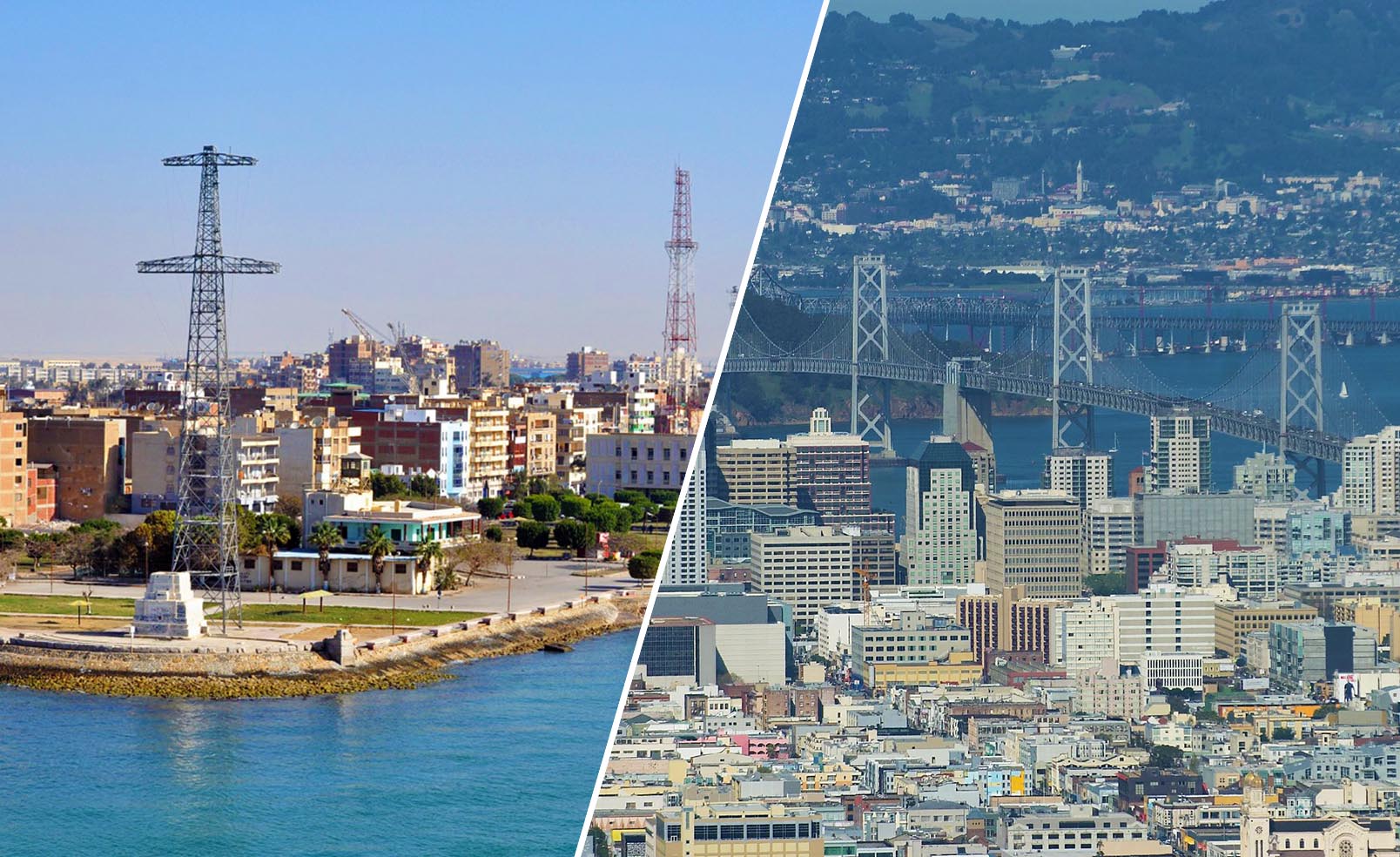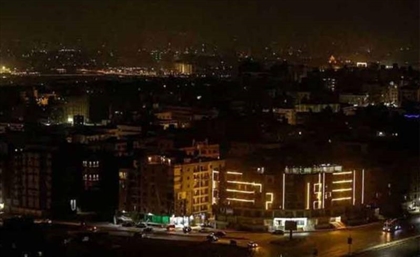Egypt's Own Bay Area? Surfing the Suez Canal
As the world looks to to the San Francisco Bay Area as a case study in tech-driven success, planned developments around Egypt's Suez Zone seem to be looking to mirror the iconic city's triumphs. The progrss team delves in...

The San Francisco Bay Area continues to top lists for liveability, innovation, talent and culture, thanks to its unique history. From ‘Wall Street of the West’ to the home of the ‘Summer of Love’ and, today, the bona fide global center of technology and web-based disruption, San Francisco City and its neighbours Palo Alto and Silicon Valley hold a inimitable attractiveness that perpetuates the San Fran metro area’s global reputation as a place of opportunity and inspiration. A mecca for the technology industry, it’s perhaps no surprise that cities across the world look to replicate its success in fostering its pioneering business, creative, and innovation culture. The fact that the Bay Area was the destination of 44% of all venture capital in the USA in 2014 and that by 2015, GDP for the Bay Area was estimated to be a whopping $535 billion, have given impetus for other governments to rally behind tech and tech-enabled industries.

The San Francisco Bay Area
One such government is Egypt’s, who have shown greater appreciation and support for technology industries, a movement that can be partially attributed to U.S. President Barack Obama’s 2009 visit to Cairo University wherein he extolled the virtues of entrepreneurship, which was followed by the establishment of the Technology Innovation and Entrepreneurship Center (TIEC) in the capital by the government in 2010. Meanwhile, Egypt’s geopolitical status in the Middle East and Africa and proximity to Europe have made it a natural home for global tech giants in the region, while a huge millennial population with high levels of university education have provided the talent necessary for these companies, as well as local ones, to achieve success.
However, as the Greater Cairo area continues to densify, Egypt has begun to look outside the capital to ease the strain on resources, as well as stimulate the economy in other cities. With the expansion of the Suez Canal completed in 2015, less than a year after the announcement of a new administrative capital city to be located between Cairo and Suez City, it’s becoming clear that the Suez area is a top priority for Abdel Fattah El-Sisi’s government. This shift leverages on the establishment of the Suez area as an economic zone in 1998 – an initiative that picked up steam in terms of the traditional shipping, logistics, and port industries in the canal. It wasn’t until 2015, however, that the other facets of the economic zone took precedence: a maritime services hub, renewable energy farms, and a dedicated ICT zone are in the books for development. In total, some $2 billion will be invested to develop the area and stimulate its economy, half of which is earmarked for a fiber-optic infrastructure, application development, and cloud computing, with another $383 million set aside for the construction of technology parks in nearby Ismailia.

Suez City
While Egypt’s universities churn out graduates at a high rate, with the government estimating that 350,000 of which can be trained to work in ICT and ICT-related industries annually, there are only two higher education facilities along the Suez Canal, each graduating less than 10,000 students each year – many of which fall into the more traditional, industrial faculties including engineering, agriculture, and energy, given the job availability in the area. However, the Suez Canal Zone Authority points to Egypt’s standing as the second biggest host of submarine cables, with 18 cables offering a combined eight terabytes per second international capacity and 100 GB per second of internet backbone capacity, connecting to Europe, Asia, and the Middle East, as the perfect starting place to strengthen the ICT industry. Despite a somewhat fertile ground to grow tech and web fields in the area, attracting talent from metropolitan cities like Cairo and Alexandria will be the biggest challenge in stimulating the industries in Suez Zone.
While a nascent startup scene with a strong tech focus has emerged in Cairo, attracting global attention following Egypt’s 2011 revolution, it remains strongly clustered there – the natural path for non-Cairenes in creative fields is to seek employment or business opportunities in the capital. “Well-educated professionals and creative workers who live together in dense ecosystems, interacting directly, generate ideas and turn them into products and services faster than talented people in other places can,” writes famed urban theorist Richard Florida, and his theory has proven correct in U.S. hubs including the San Francisco Bay Area and, on the East Coast, New York. In Egypt’s capital, Downtown Cairo became the center for technology and ICT as the industry emerged in the 1980s, and recent developments, including the much publicised Greek Campus and the successful startup stories that have emerged from there, have also proven the creative cluster theory to be true. Thanks to a legacy of arts, culture, and activism in city’s urban core, Downtown Cairo has a vibrancy that’s achieved by the collision of creative professionals. The Suez Zone, on the other hand, has only thus far been able to attract construction, shipping, logistics, and engineering professionals.

A rendering of the Suez Canal Economic Zone’s proposed development. Courtesy of the General Authority for Suez Canal Economic Zone
Conversely, San Francisco has long been a magnet for creatives and opportunity-seekers. A resilient economy, traditionally rooted in finance and banking, the 50s and 60s saw the city become the home of American counterculture thanks to an explosion of alternative arts and an LGBT-friendly community. This vibrancy continues to live on in San Francisco, despite a markedly different demographic than the Hippie movement that cemented the city’s status as a place of free expression, out-of-the-box thinking, and creativity. And it’s that very vibrancy and almost-whimsical lifestyle that is as important to talent that flocks to San Francisco and the Bay Area as the economic and professional opportunities available today. With that in mind, it would be difficult if not impossible for a city other than San Francisco to achieve the same success if it does not have the same sociopolitical and cultural history. Greg Delaune, architect, urban planner, and CEO of the San Francisco-based Urban Innovation Exchange, instead explains that ‘program-based planning’ rather than traditional top-down urban planning, as seen in the case of Egypt’s ambitious projects, provides a better solution for development: “it’s a multidisciplinary approach to urban planning that takes into account local culture and values and really tapping into the local energy and human resources and, from there, bringing together PPPs. That allows us to take best practices from any city in the world and apply it to another city by looking at how it manifests at a local level and reinterpreting it for a different culture. It’s fundamentally about culture.”
While Egypt’s exceedingly young, digital native and connected demographic manifests itself in most cities, from Cairo and Alexandria, to the Suez and Ismailia, the business climate in Egypt, particularly outside of the capital, remains steeped in tradition. There have been some technological successes, however, with the establishment of Smart Village in 2001. Egypt’s first tech park, the private public partnership now hosts some of the world’s preeminent technology, ICT, and telecommunications companies, including Orange, Vodafone, IBM, Intel, Microsoft, HP, Ericsson, Oracle, and Dell. However, the tech park is located on the very outskirts of Cairo and maintains a corporate atmosphere rather than a creative one. Meanwhile, Maadi Technology Park in south Cairo begun operations in 2010, however, most of the companies on site provide offshoring support and call center services, rather than research, development, or innovation.
Nevertheless, Smart Village’s success in attracting and maintaining some of the world’s top companies has undoubtedly provided the impetus for the Ministry of Communications and Information Technology to announce the establishment of three more tech parks outside of Cairo: two are already under construction in Borg El Arab, Alexandria and New Assuit, Assuit, while a third in 10th of Ramadan City, Sharqia, has been scheduled. These projects, however, differ from the main development planned for tech and ICT in the Suez zone in that these tech parks are commute-based, while ‘Technology Valley’ on the East Bank of the Suez Canal has residential real estate in the masterplan, as well as space dedicated to public parks and sports facilities. While theoretically, this mixed-use development should attract millennial talent – as, globally, more and more young professionals seek opportunities that can provide a work-play-live integration – the top-down mode of urban planning in Egypt has seen little success, as satellite cities such as 6th October City, which was established by the government in the late 70s, are only just beginning to resemble urban life as Egypt knows it, with the private sector taking the lead in providing services and community-building infrastructure over the last 10-20 years.

Courtesy of the General Authority for Suez Canal Economic Zone
This inorganic and exclusionary urban planning process that continues to be the norm in Egypt puts the planned technology parks along the Suez Canal, particularly Technology Valley, in jeopardy as the needs and desires of the talents necessary for its success go unconsidered. Even TIEC’s – a government initiative – CEO, Hossam Osman admits that “The government has to initiate and to somehow employ a hybrid approach. They have to sponsor others to do but also to do certain things. With time, we would like to withdraw from the doing and give more to the private sector,” when it comes to stimulating an enabling and attractive environment for technology entrepreneurship.
Nevertheless, Egypt’s ICT sector’s contribution to GDP grew by 13% in 2014-15, reaching EGP 65.9 billion ($9 billion) and representing 4.1% of total GDP and the government continues to stress its competitive advantages as the Ministry of Communication and Information Technology works towards a 2020 plan that focuses on seven main pillars including infrastructure, digital content, electronics design and manufacturing, ICT industry programs and initiatives, and legislative and policy frameworks. The ambitious plan, however, should perhaps be taken with a grain of salt until the government makes an indication that it’ll be consulting or co-opting the existing technology and creative industries ecosystem in its strategy. As Greg Delaune explains, “you can’t take a Silicon Valley solution and just transport it to another location. You need to understand what the moving parts within that culture are and how to adapt that to another culture that has different funding processes, education systems or government mechanisms.”
This article was originally published on progrss.com.
You can check out progrss' #CreativeCitiesUSA project here. For more, check out their Facebook page.
- Previous Article Tameem Youness Takes On Arab Superheroes in Raseeni Episode 11
- Next Article Alexandria Hospital Shut Down After Denying Patients Treatment
























